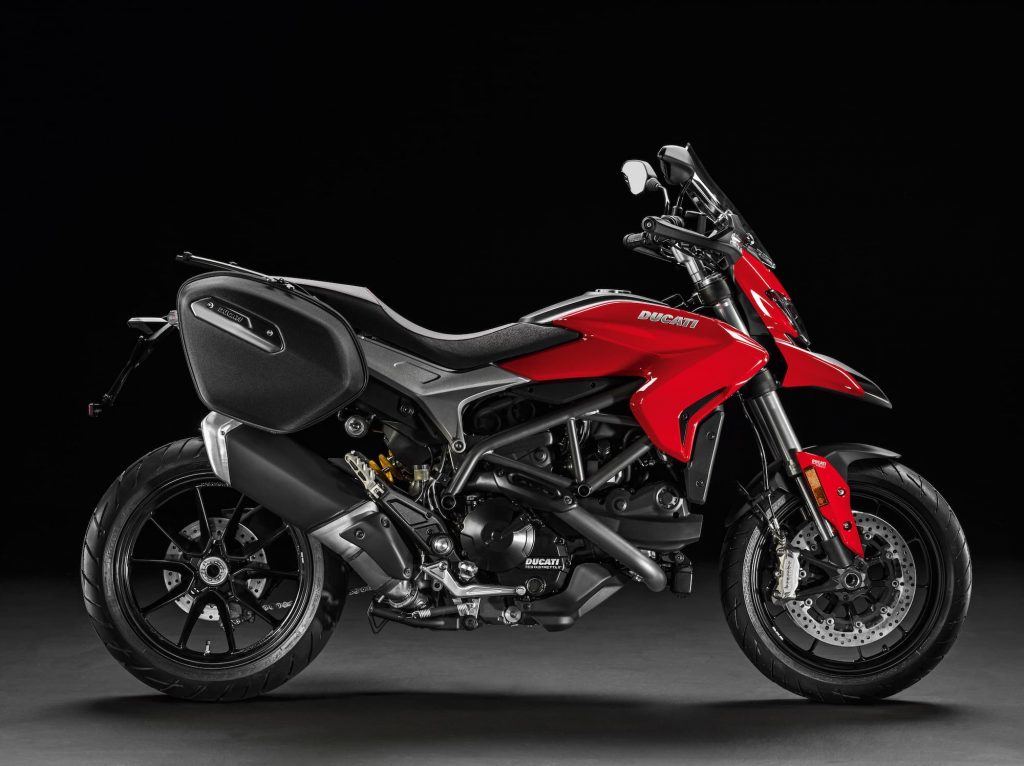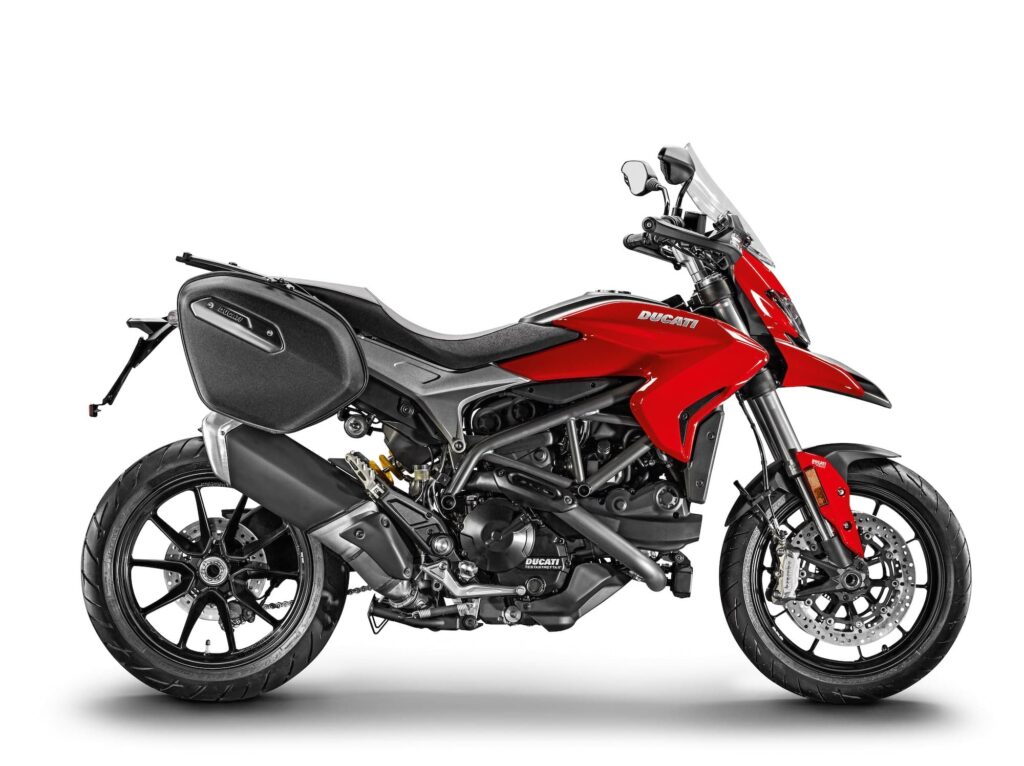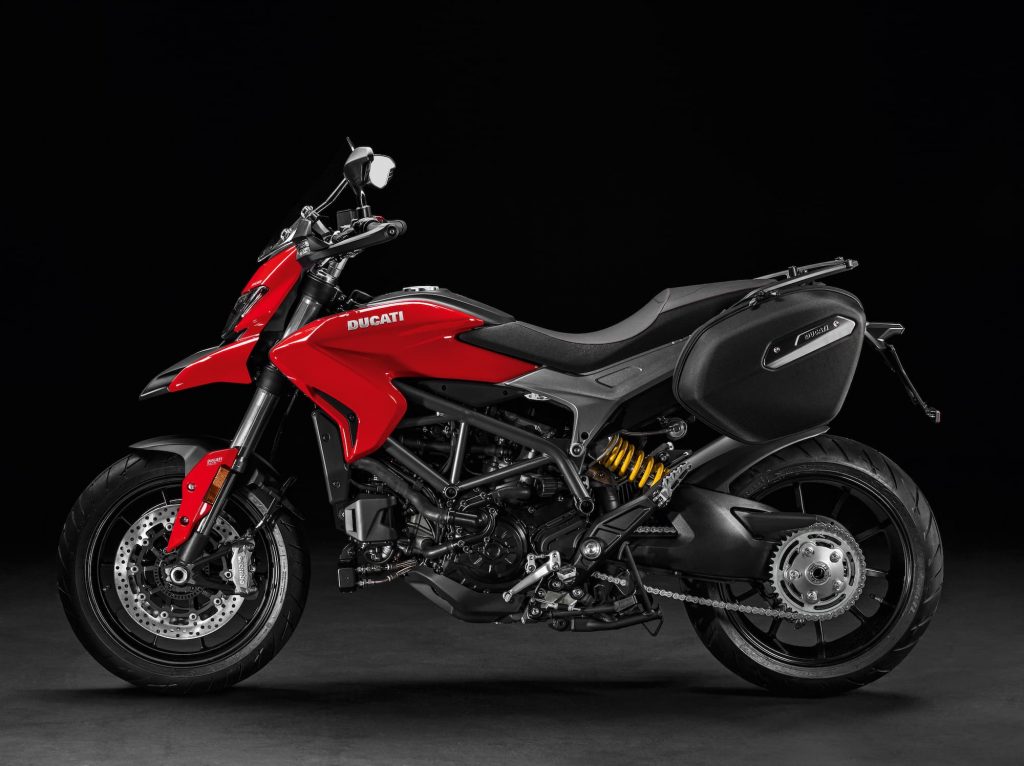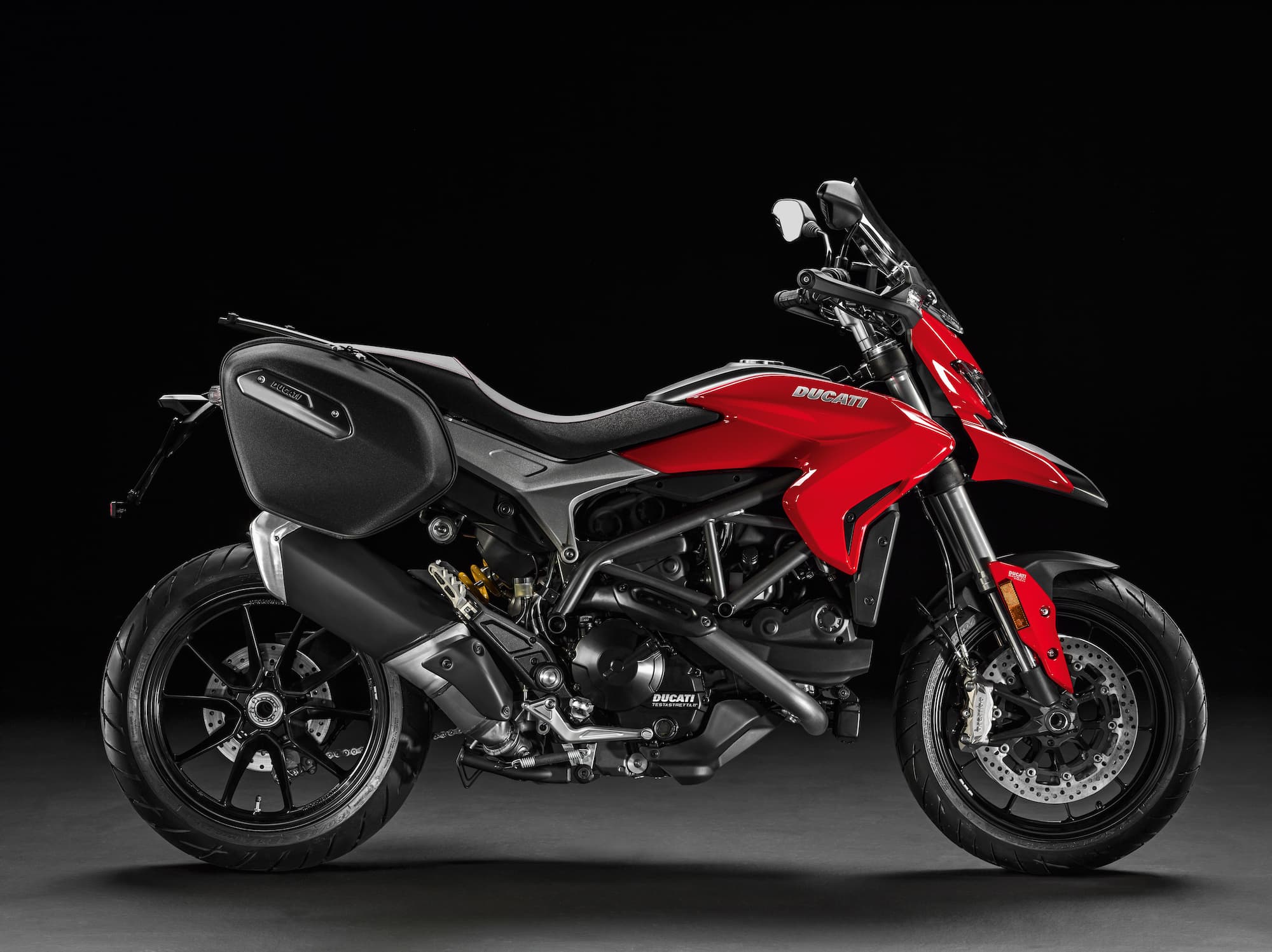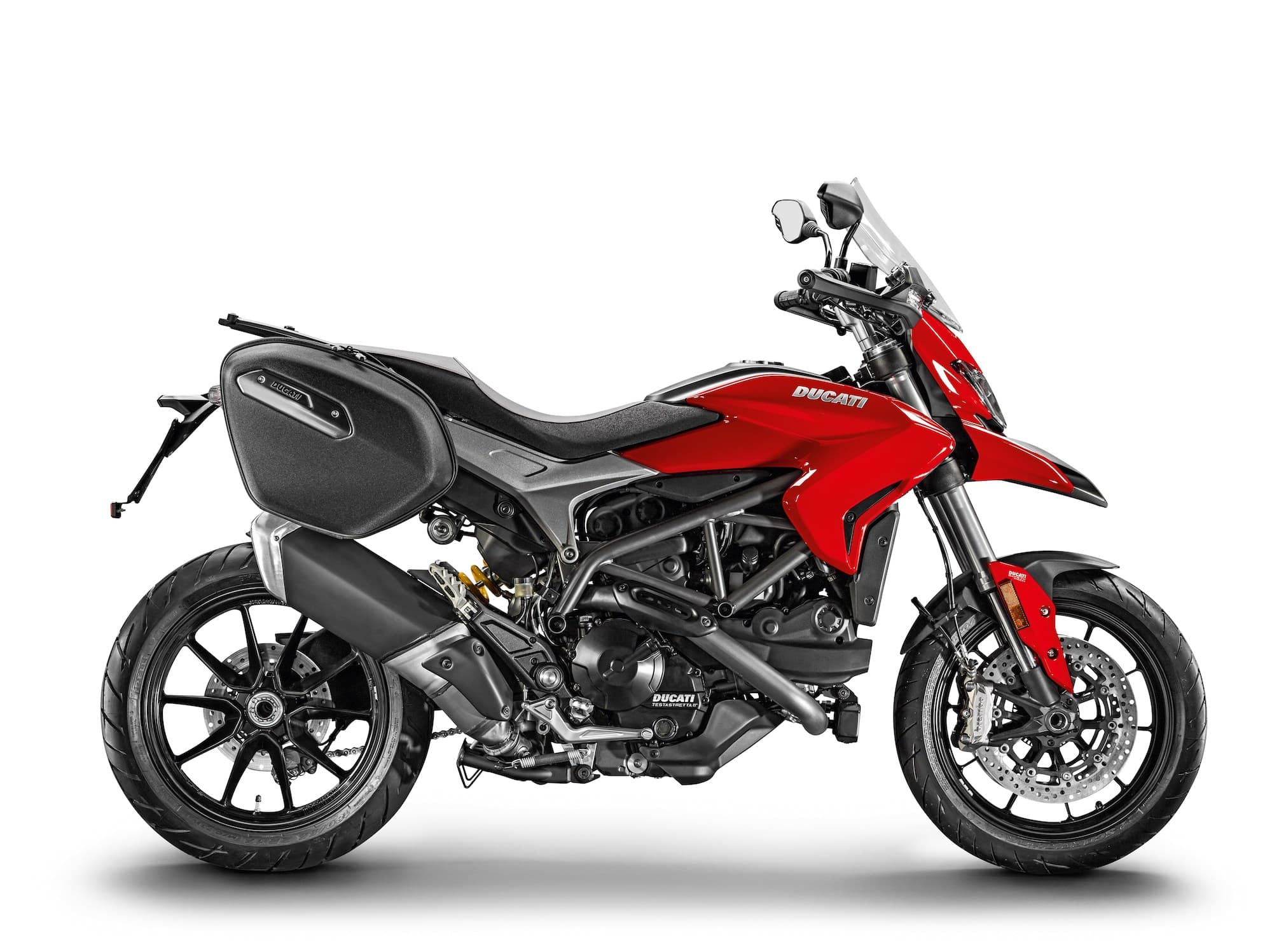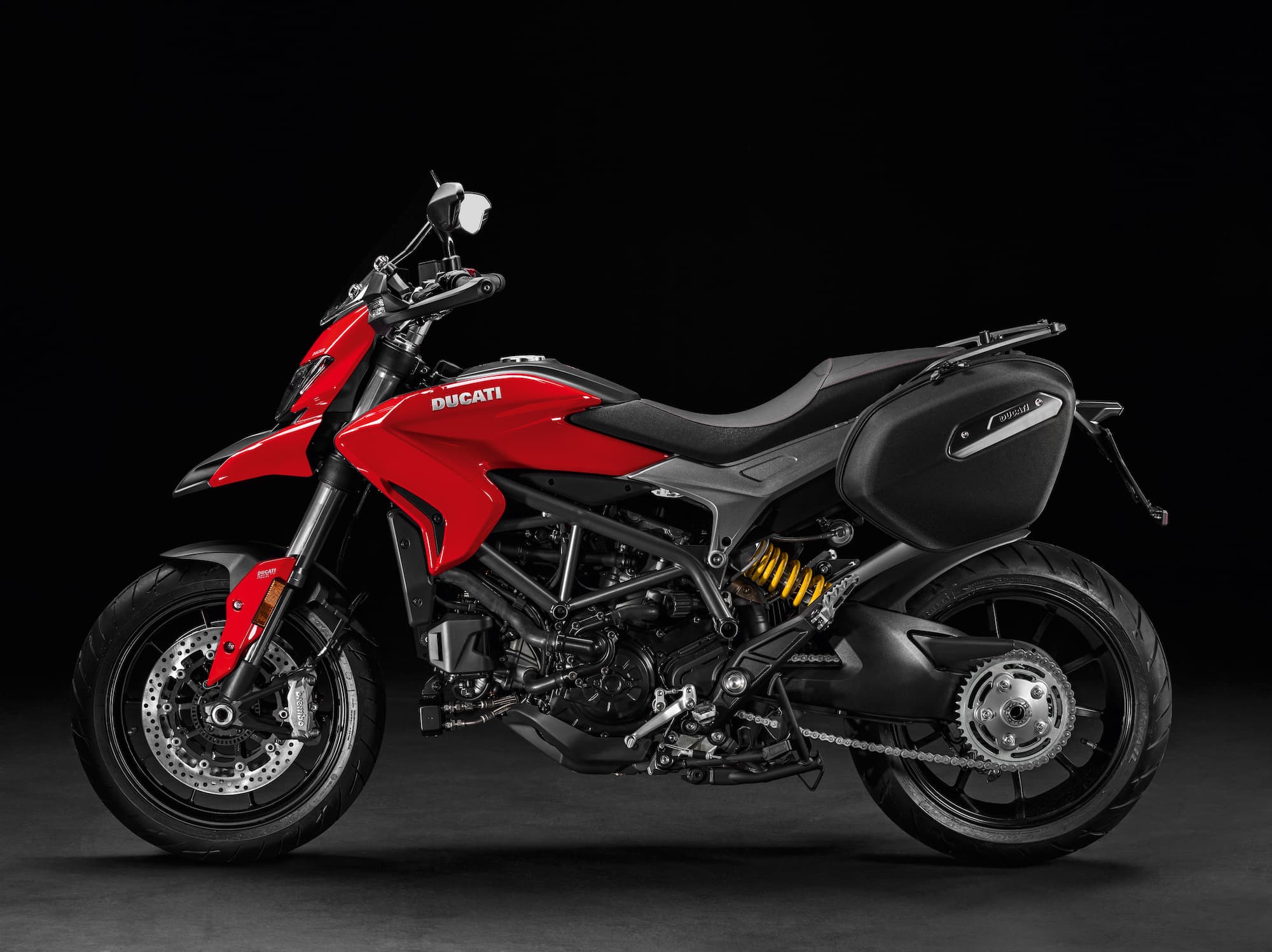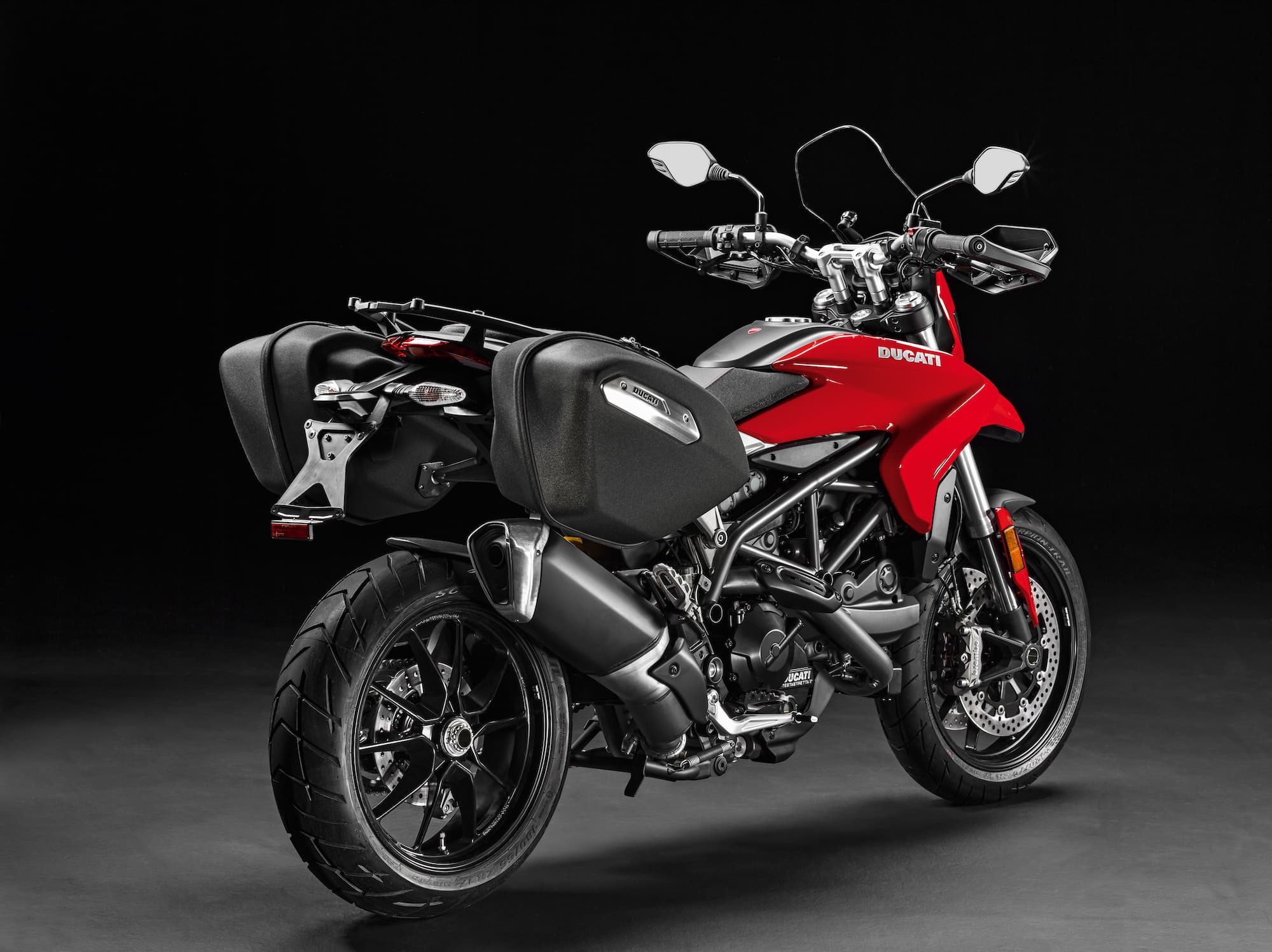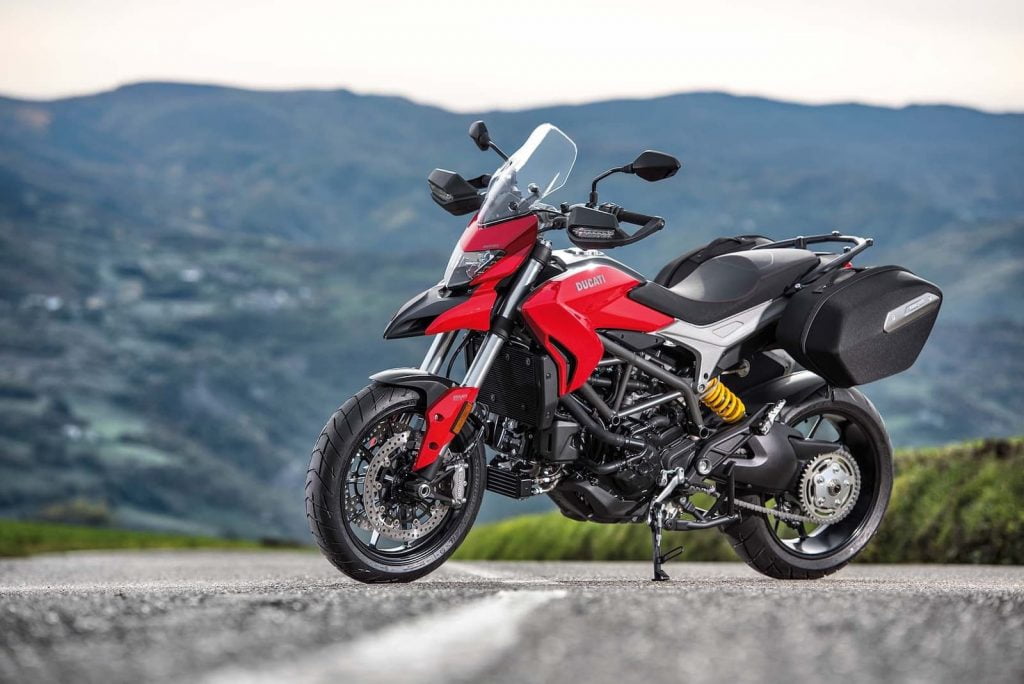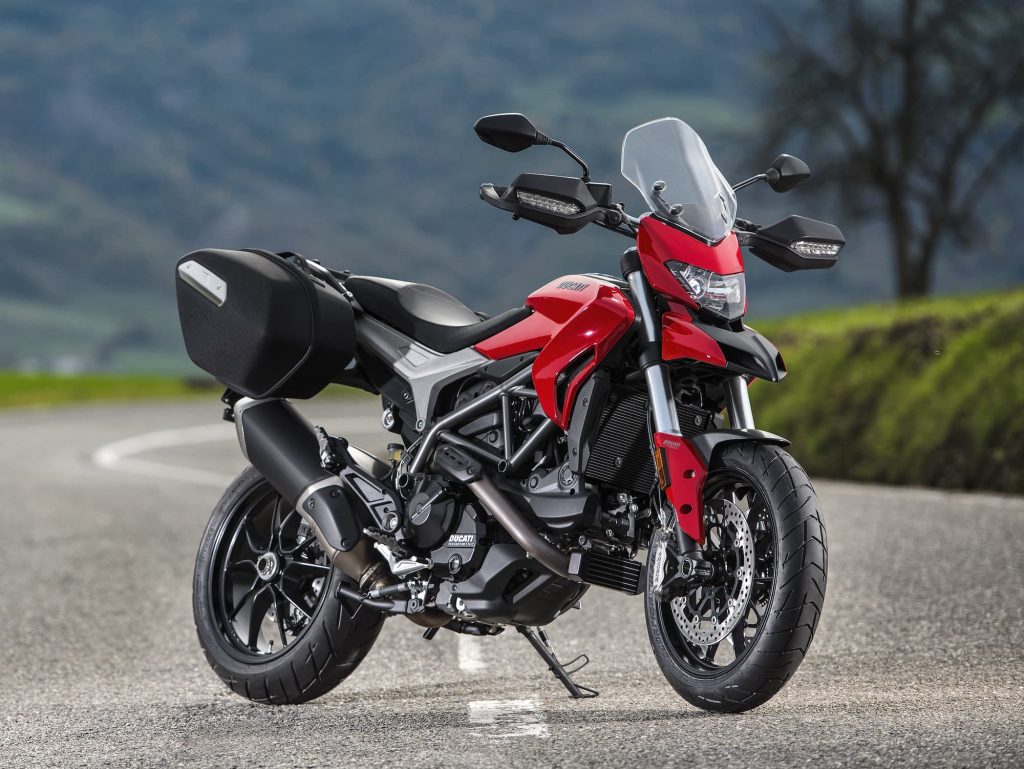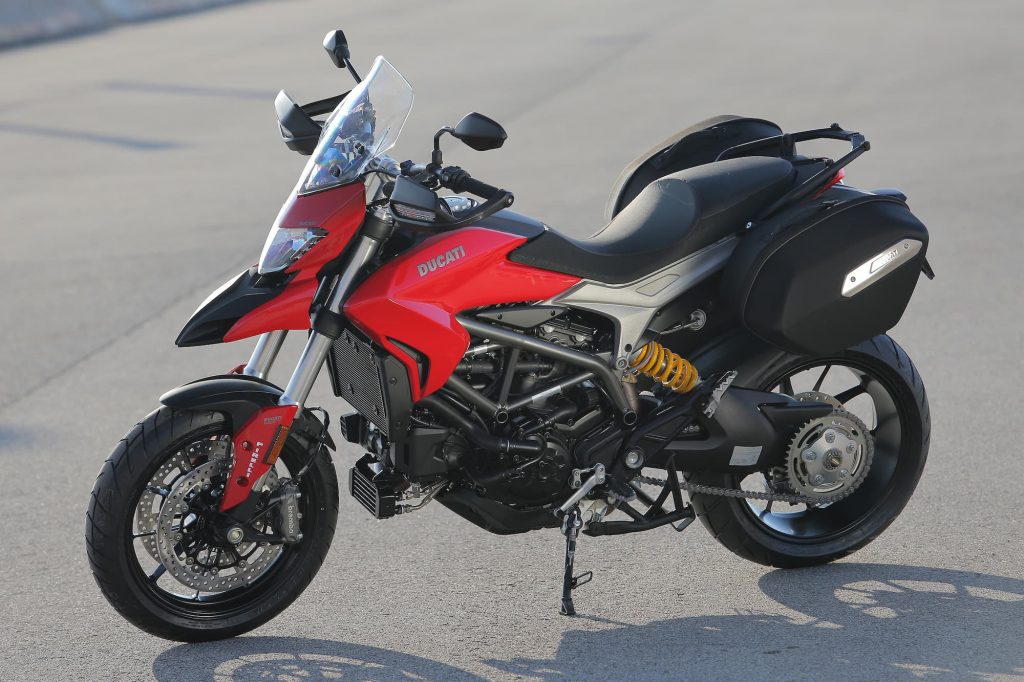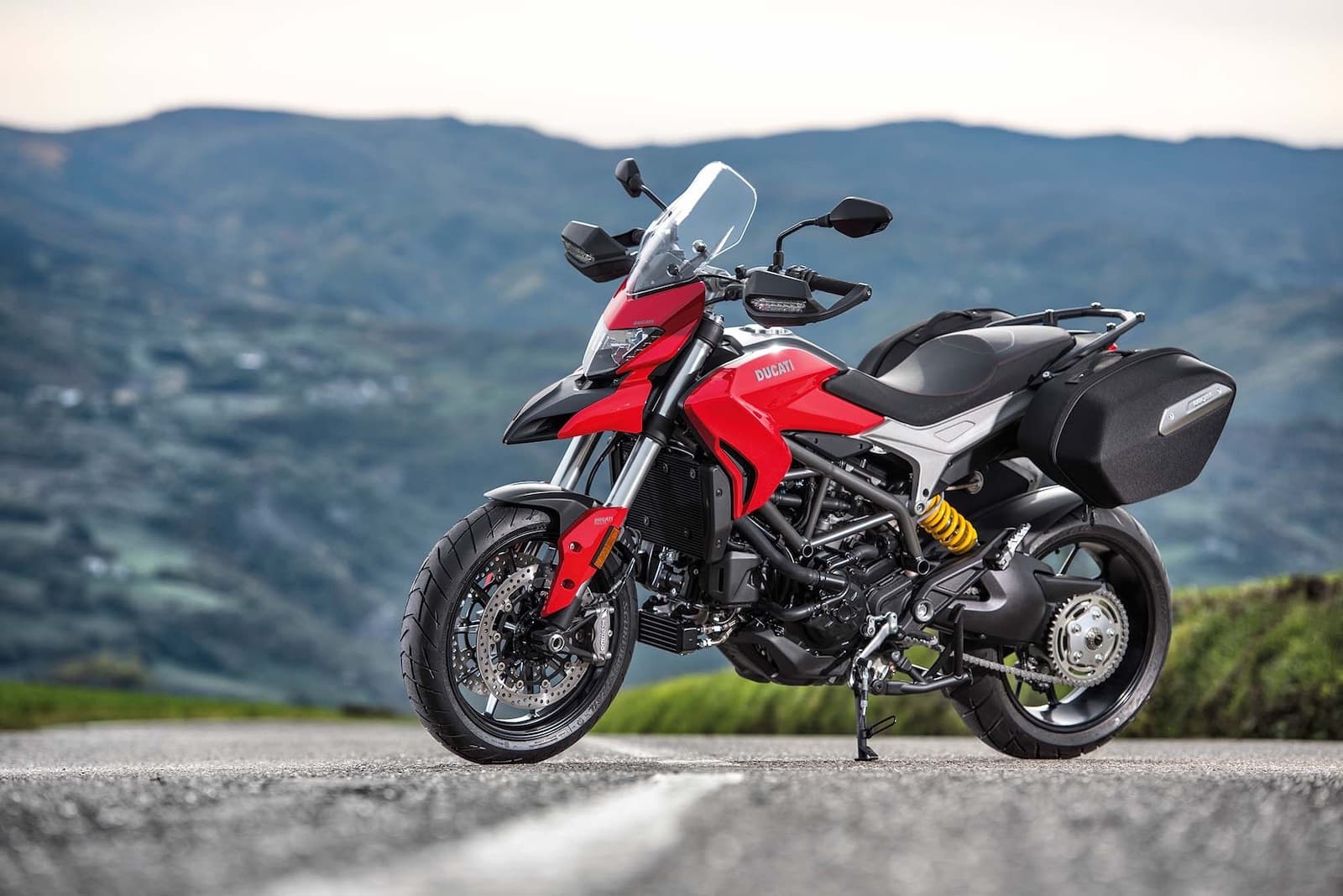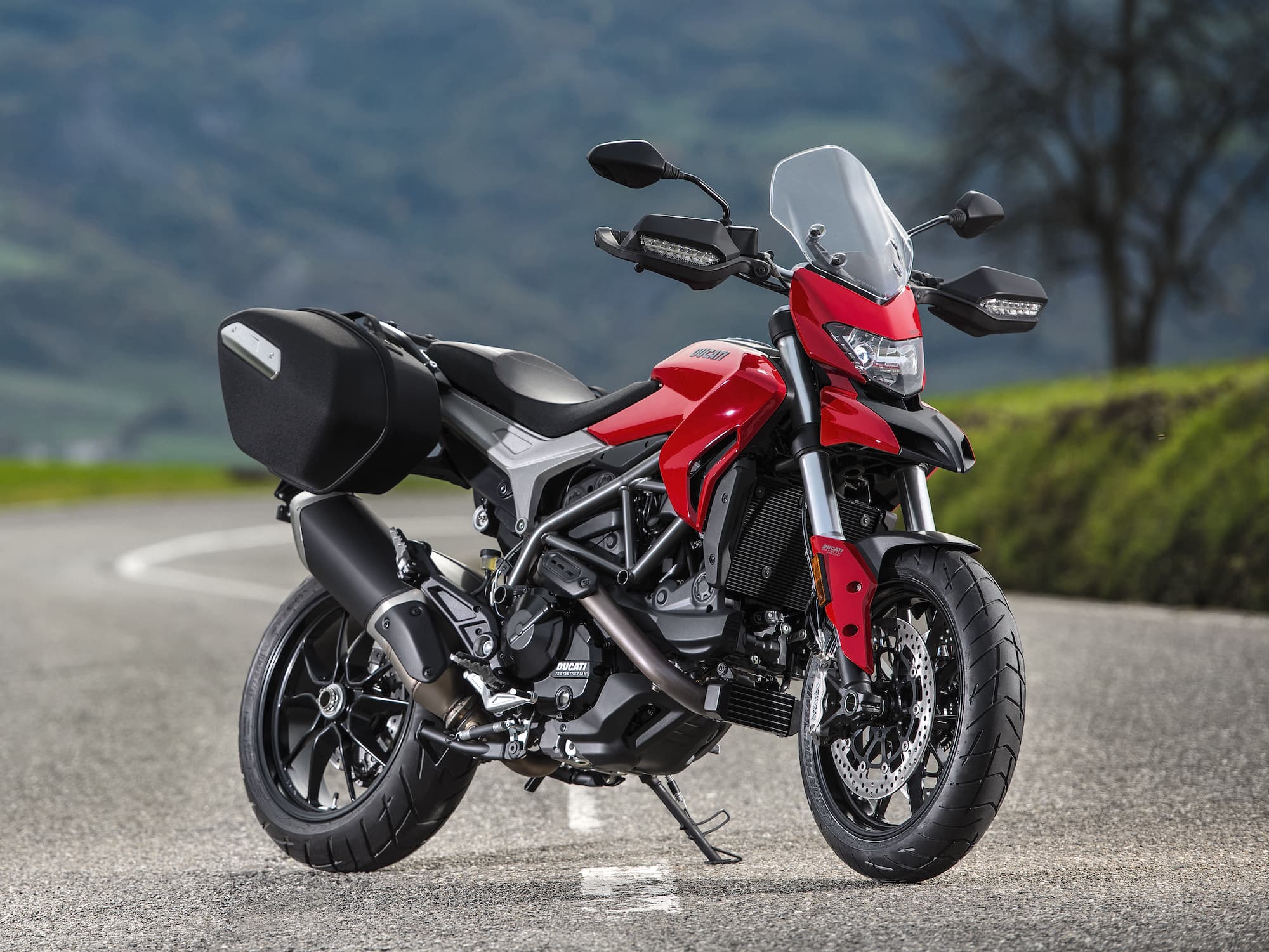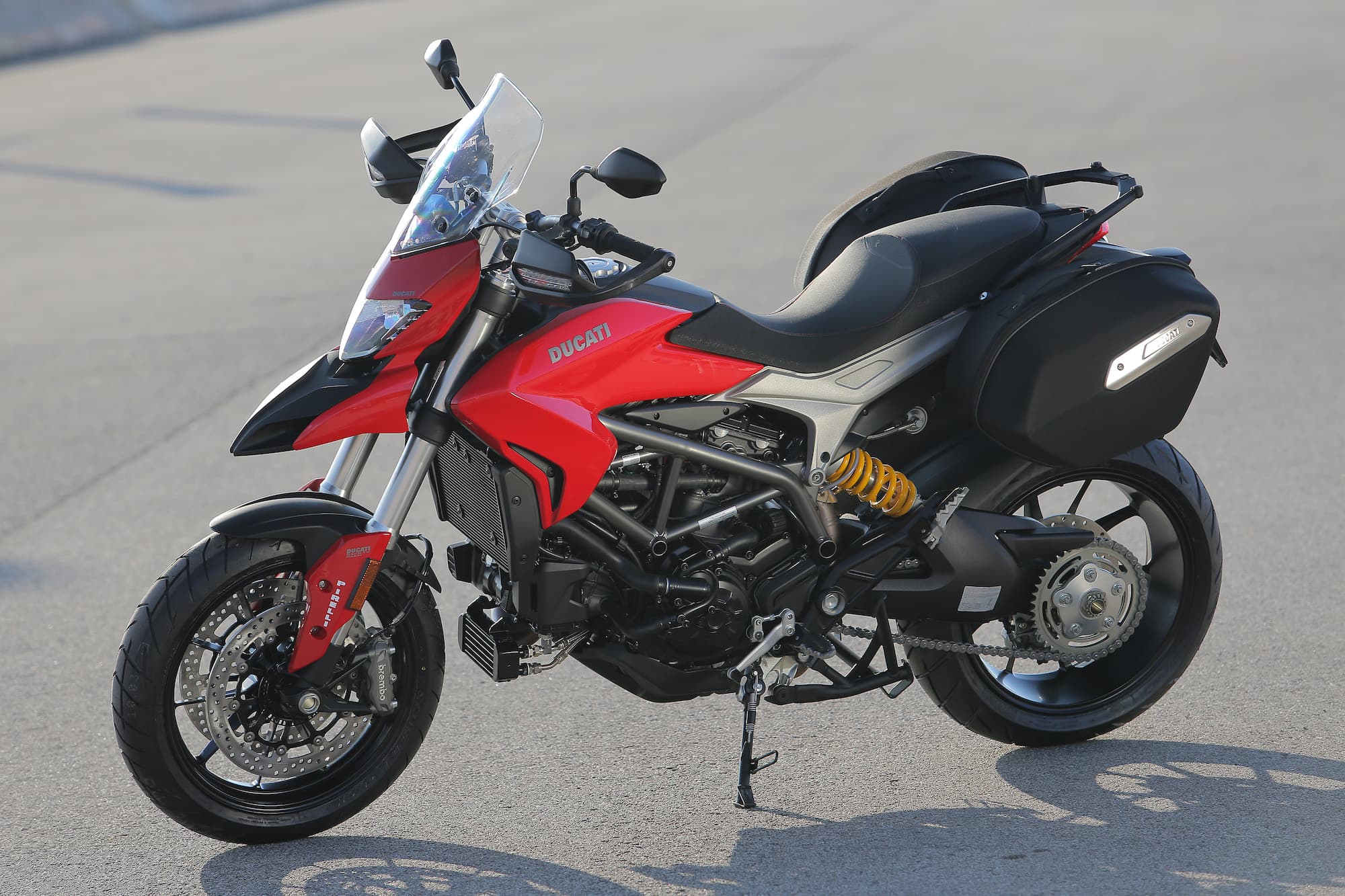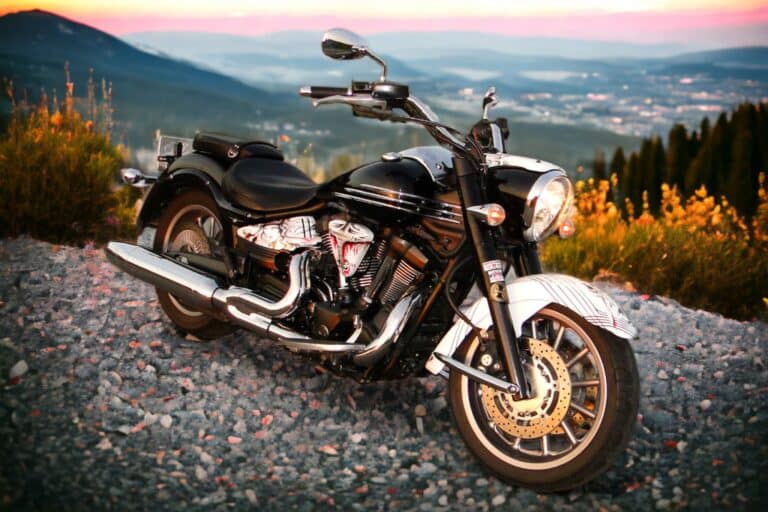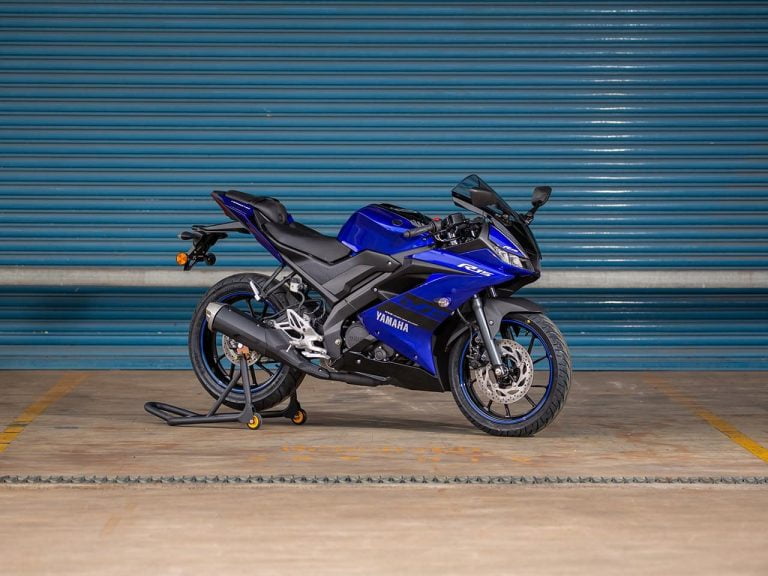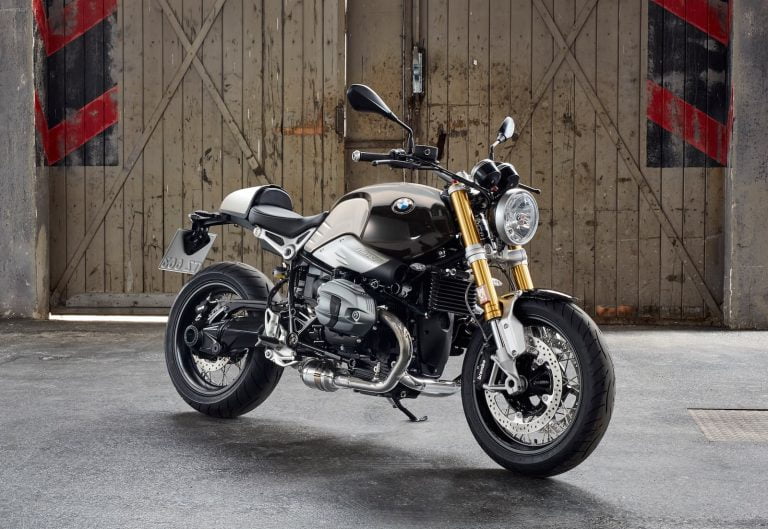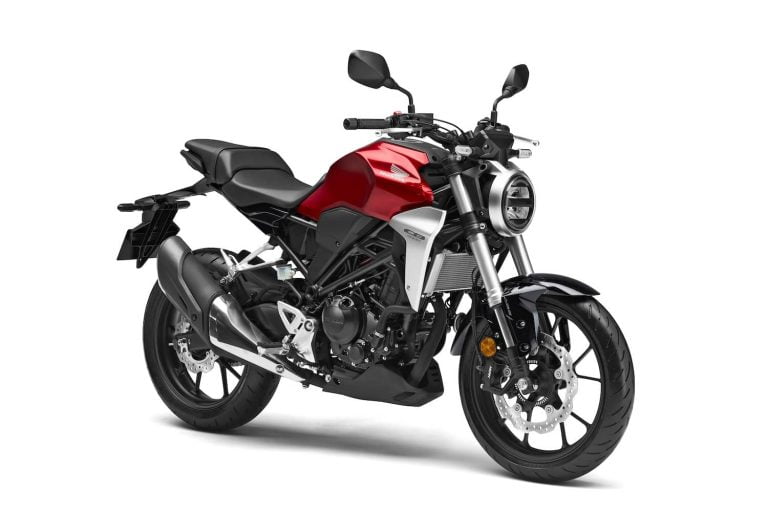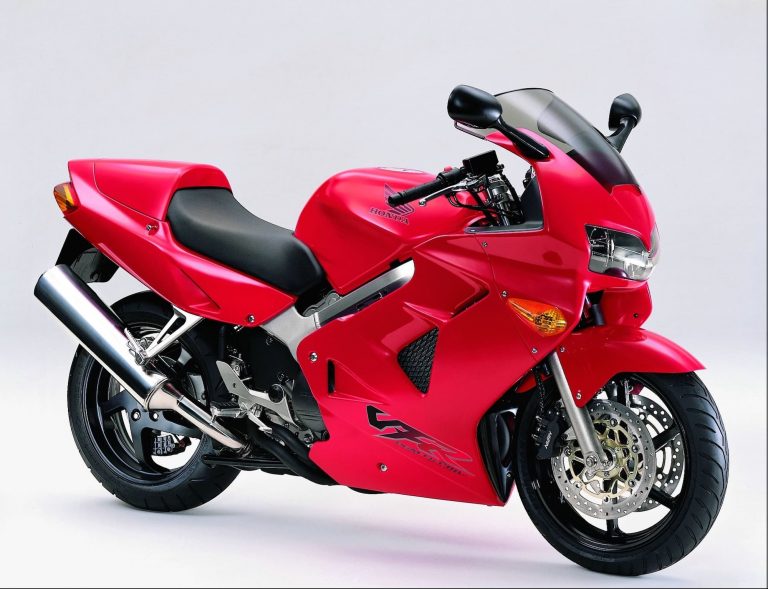Ducati Hyperstrada 939 (2016-2018) Maintenance Schedule
This is the maintenance schedule and service intervals for the Ducati Hyperstrada 939, sourced from the owner’s manual, service manuals, and parts diagrams.
The Ducati Hypermotard 939 replaces the Ducati Hypermotard 821. It’s fundamentally the same bike — either a hooligan-ish sport tourer, or a travel-oriented hooligan bike. Take your pick.
The Hypermotard 939 is based on the 937cc Testastretta 11-degree L-twin. It’s a liquid-cooled 8-valve motor that’s found in a number of other Ducati motorcycles, such as the Ducati Supersport for example.
The maintenance is almost identical as with the Ducati Hypermotard 939, but there are a few more parts to do regular checks on, like the center stand.
The Hyperstrada 939 was made from 2016-2018. After that, Ducati retired the Hyperstrada line, opting to re-introduce a middleweight Ducati Multistrada, the Multistrada 950.
This site has links for things like oil and spark plugs from which we earn a commission (which unfortunately nobody can save, not even us). If you appreciate this work, then please use those links. Thanks!
Ducati Hyperstrada 939 Service Intervals
Like other motorcycles with the Testastretta 11-degree motor, the Ducati Hyperstrada 939 has 9 000 mile / 15 000 km or annual service intervals.
At every service, change the oil and filter, and go over the motorcycle to check for leaks, loose items, or wear.
Every 18 000 miles / 30 000 km, change the spark plugs, change the air filter (if not done so recently), and inspect the valve clearances.
The Ducati Hyperstrada 939 has a four valve-per-cylinder engine with two cylinder heads. As it has desmodromic valves, you have to check the opener and closer clearance. Looseness in one will affect the other.
Aside from that, be sure to change the timing belts every five years, even if service intervals aren’t reached.
Regularly change the brake fluid, coolant, and even the fork fluid sometimes.
Regular maintenance for the Ducati Hyperstrada 939
This is maintenance that you can do yourself (though the manual says you need a dealer to do it).
Every 1000 km/600 miles OR 6 months (whichever comes earlier, perform the following maintenance:
| Hyperstrada 939 regular maintenance |
|---|
| Checking the engine oil level (Motul 7100 15W-50) |
| Check the brake and clutch fluid level (Castrol DOT 4) |
| Check tyre pressure and wear |
| Check the drive chain tension and lubrication (use Motul Chain Paste) |
| Check the brake pads (Front: 2x OEM 61341021A or EBC FA630HH; Rear: 2x 61340381A or EBC FA266HH) |
Ducati Hyperstrada 939 Maintenance Schedule Table
The following is the list of maintenance operations and to be done on the Hyperstrada 939 with a distance or time interval — whichever comes earlier.
This maintenance schedule is in the same format as in the manual, though altered to fit this screen.
Notes:
- The break-in service is omitted.
- Some of the items need to be done by a dealer. These are marked with a [D].
- Past the end of the maintenance schedule, keep following it in the pattern indicated.
| km x1000 | 15 | 30 | 45 | 60 | Time |
|---|---|---|---|---|---|
| miles x1000 | 9 | 18 | 27 | 36 | Months |
| [D] Reading of the error memory with DDS and check of software version update on control units | • | • | • | • | 12 |
| [D] Check the presence of any technical updates and recall campaigns | • | • | • | • | 12 |
| Change engine oil and filter (high-grade synthetic e.g. Motul 7100 15W-50 or Mobil 1 15W-50 and filter HF153RC) | • | • | • | • | 12 |
| Clean the engine oil mesh filter assembly | • | • | – | ||
| Check and/or adjust valve clearance | • | • | – | ||
| Change timing belts (part number 73740252A) | • | • | 60 | ||
| Change spark plugs (NGK MAR9A-J) | • | • | • | • | – |
| Clean air filter | • | • | – | ||
| Change air filter (DU-1006) | • | • | – | ||
| Check brake fluid level | • | • | • | • | 12 |
| Change brake fluid (Castrol DOT 4) | 36 | ||||
| Check brake disc and pad wear. Change, if necessary | • | • | • | • | 12 |
| Check the proper tightening of brake calliper bolts and brake disc flange screws | • | • | • | • | 12 |
| Check frame-to-engine fasteners tightening | • | • | • | • | – |
| Check wheel hub bearings | • | • | – | ||
| Check and lubricate the rear wheel shaft (lithium soap-based grease) | • | • | – | ||
| Check the cush drive damper on rear sprocket | • | • | – | ||
| Check the proper tightening of final drive front and rear sprocket nuts | • | • | • | • | 12 |
| Check final drive (chain, front and rear sprocket) and sliding shoe wear | • | • | • | • | 12 |
| Check final drive chain tension and lubrication (Motul chain paste) | • | • | • | • | 12 |
| Check steering bearings and lubricate, if necessary | • | • | – | ||
| Change front fork fluid | • | – | |||
| Visually check the front fork and rear shock absorber seals | • | • | • | • | 12 |
| Check the freedom of movement and tightening of the side and central stand (if any) | • | • | • | • | 12 |
| Visually check the fuel lines | • | • | • | • | 12 |
| Check rubbing points, clearance, freedom of movement and positioning of hoses and electric wiring in view | • | • | • | • | 12 |
| Lubricate the levers at the handlebar and pedal controls | • | • | • | • | 12 |
| Change coolant (ethylene glycol pre-mix) | • | 48 | |||
| Check the coolant level and check circuit for damage | • | • | • | • | 12 |
| Check tyre pressure and wear | • | • | • | • | 12 |
| Check the battery charge level | • | • | • | • | 12 |
| Check idling | • | • | • | • | 12 |
| Check the operation of all electric safety devices (side stand sensor, front and rear brake switches, engine kill switch, gear/neutral sensor) | • | • | • | • | 12 |
| Check lighting, turn indicators, horn and controls | • | • | • | • | 12 |
| [D] Reset the Service indication through the DDS 2.0 | • | • | • | • | – |
| Final test and road test of the motorcycle, testing safety devices (ex. ABS and DTC), electric fans and idling | • | • | • | • | 12 |
| Softly clean the motorcycle | • | • | • | • | 12 |
| [D] Fill out that the service was performed in on-board documentation (Service Booklet) | • | • | • | • | 12 |
About the Ducati Hyperstrada 939
The Ducati Hyperstrada 939 extends the Hypermotard concept, making an everyday hooligan bike into something you can tour with.
The Ducati Hyperstrada 939, much like the Hyperstrada 821 that preceded it, is a Hypermotard but with a few extra bits to make it touring ready: a windshield, side bags, centre stand, and hand guards.
Other than that, it has the same fun, reliable, and relatively low-maintenance (compared to other Ducatis anyway!) 937cc L-twin Testrastretta 11 degree engine that makes 83 kW or 113hp at a very accessible 9,000 rpm, putting power down through a 6-speed transmission and a chain drive.
Astute observers might note that the peak power and torque figures of the 937 aren’t much higher than those in the 821 engine. But that’s not really what the upgrade is about. The new 937 engine has a broader spread of torque and makes more peak torque down lower than the old one, resulting in a bike that has more thrust at more parts of the rev range.
The Ducati Hyperstrada 939 also ironed out a lot of reliability issues that plagued the earlier generation Ducati Hyperstrada (and Hypermotard) 821, especially in 2013 and 2014.
Earlier owners complained of poor fuelling, a ridiculously grabby clutch, and soft, under-sprung suspension.
The Hyperstrada 939 improved the clutch and fuelling dramatically, making it actually rideable. Unfortunately the front suspension is still an non-adjustable 43mm USD fork. So the Hypermotard SP’s Öhlins setup becomes much more desirable — but there’s no Hyperstrada 939 SP!
Aside from that, the Hyperstrada 939 kept the same practicality of the earlier Hyperstrada line.
Maintenance of the Ducati Hyperstrada 939 is similar to the outgoing model. Valve service intervals are a generously spaced 30000 km (18000 mi).
The Ducati Hyperstrada was effectively replaced with the Ducati Multistrada 950, with largely the same engine, but in a body and bike more decidedly focused on distance travel — just with a “middleweight” engine.
Ducati Hyperstrada 939 Owner’s Manual
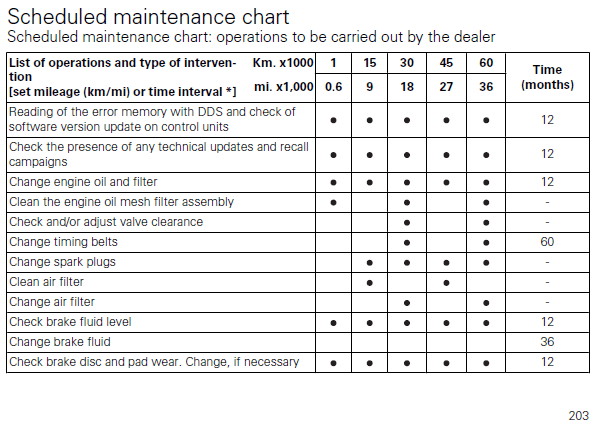
The above info was sourced from the owner’s manual for the Ducati Hyperstrada 939 in 2016. You can download the manual from the Ducati website here.
